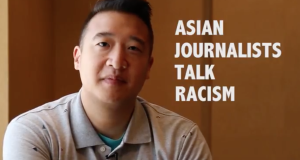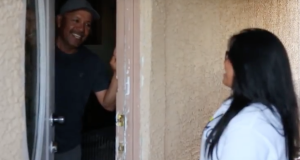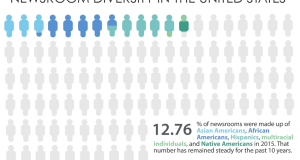As the industry continues to change, the Asian American Journalists Association must also change what its annual convention offers to members.
AAJA focuses on “offering the right courses or offering the right panel, workshops or speakers … bringing things that are more cutting-edge,” said National Vice President for Print Yvonne Leow, of the San Francisco Bay Area chapter.
“Since it’s been a shrinking profession, we begin to wear many hats,” said Ankur Dholakia, who was co-chair of the 2011 Detroit convention. “We have to figure out what type of journalist we are and how to serve our members and how to serve AAJA.”
In recent years, the organization has started to rethink the annual convention model. The governing and advisory boards have discussed joining other nonprofits to stage conventions or hold smaller regional conferences.
Leow and Dholakia have different opinions about future convention models. Leow said AAJA should continue hosting the convention every year but in a cost-efficient way. She thinks that although hosting a convention is expensive, the event generates a lot of revenue and is good for AAJA.
Considering journalism’s shrinking job market, combined with the differences in size and resources of the various chapters, Dholakia saidhe doesn’t think a yearly convention is necessary.
“We are going to stay true to our statement. If we open that up to some other organization, the attention may be drawing away,” Dholakia said. The first point of AAJA’s mission is “to provide a means of association and support among Asian American and Pacific Islander (AAPI) journalists, and to advance AAPI journalists as news managers and media executives,” according to AAJA’s website.
Leow said that there has not been any official decision for a joint convention yet, but the national office and organization leaders are always open to the idea of working with another journalism nonprofit group in the future.
“Everything has pros and cons,” Leow said. “Having a joint convention could actually attract more potential sponsors because there is going to be more people, a wider reach. It just depends how the structure will be.”
This year, AAJA’s 24th annual convention has a heavy emphasis on data visualization, entrepreneurship and start-up culture. The organization projects convention registration at roughly 850 so far.
Leow said that the planning and programming of the convention is still quite open, but that the organization will surely “take advantage of the tech scene and infuse people with that type of inspiration.”
Leow is involved with programming to ensure the panels of the convention are all set by the time the convention begins.
This year, the organization has introduced breakout sessions, designed to bring journalists of similar niche skills together, and lightning talks, five-minute presentations spanning a variety of topics modeled after TED talks.
“Hundreds of hours go into planning a convention,” said Kathy Chow, executive director of AAJA.
Planning for the convention begins a year before the event. All chapters help to make the convention a success by offering volunteers, securing items for the silent auction or becoming part of the programming committee. The expense of each convention varies by city and year. The 2015 convention will bring AAJA members to San Francisco, where the organization was formed 33 years ago.
But in a booming city like Washington, how do you narrow options to one hotel and convention site?
“All site visits are conducted by the executive director and host city convention co-chairs. Different properties are reviewed and then decide upon based on logistics and room rate,” Chow said.
The convention committee, program committee and the national office all play a part in organizing the convention, handling most of the legwork each year.
The national staff works closely with the national president and sometimes vice presidents to coordinate the hotel and many of the sponsorships each year.
Dholakia said the host chapter and the convention city are chosen by the governing and advisory boards. The entire board chooses a few cities as options and the advisory board votes on those cities for the next convention spot.
The board also considers which cities have recently hosted conventions and tries to move the event from East Coast to West Coast, south to north.
Follow @cecidu1 on Twitter.
 VOICES Publishing from the AAJA National Convention
VOICES Publishing from the AAJA National Convention







